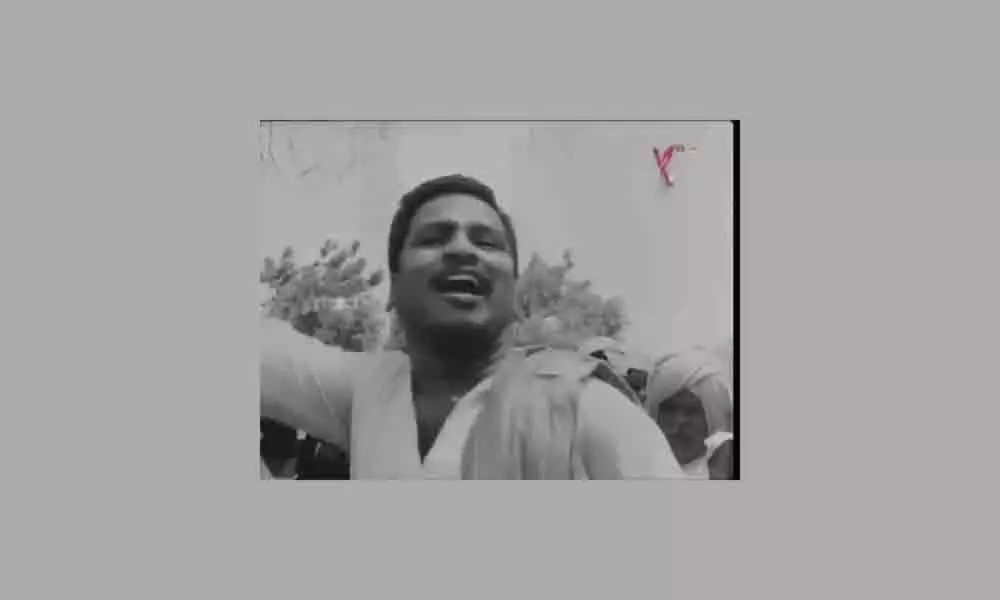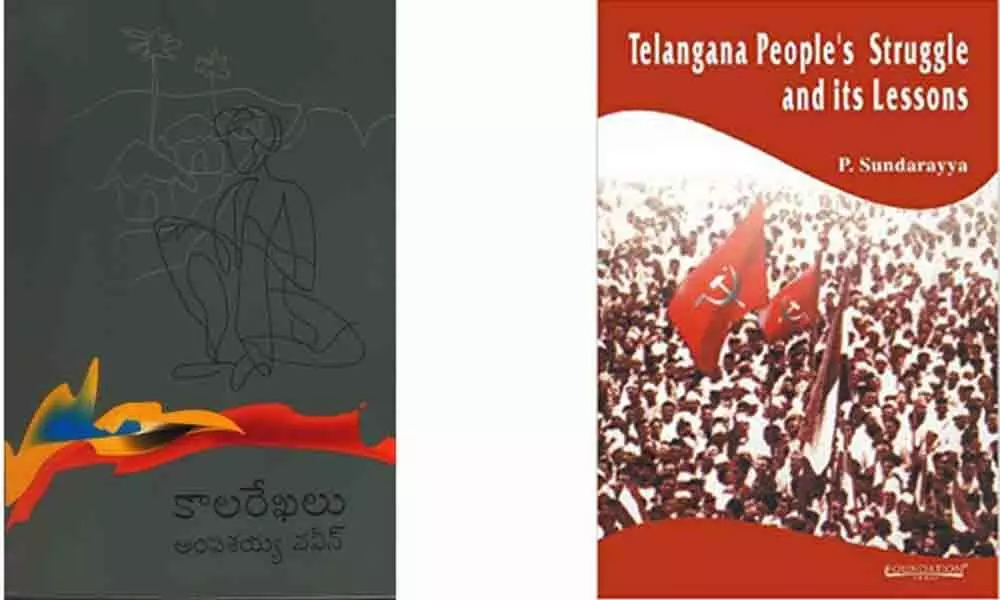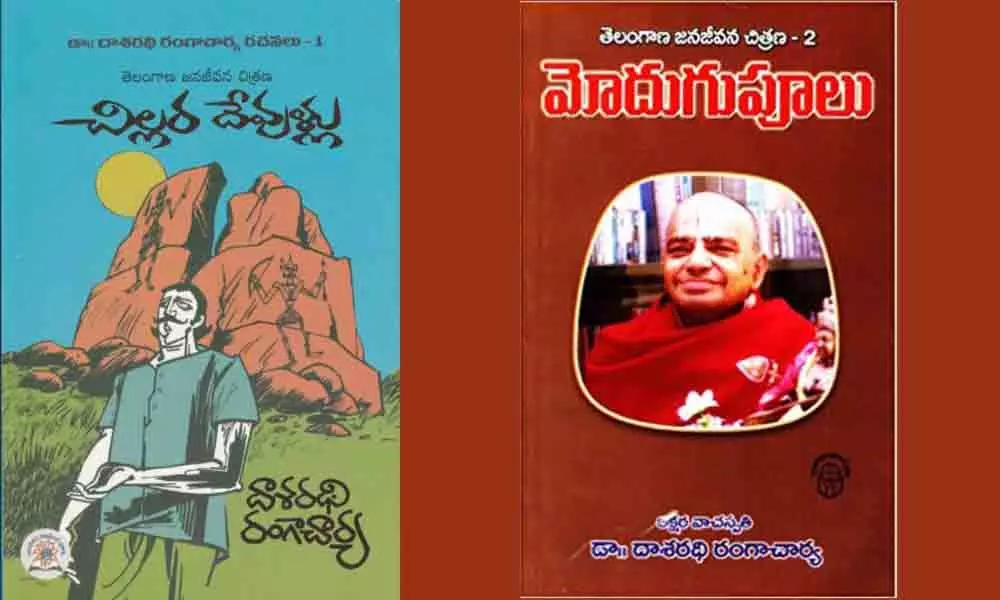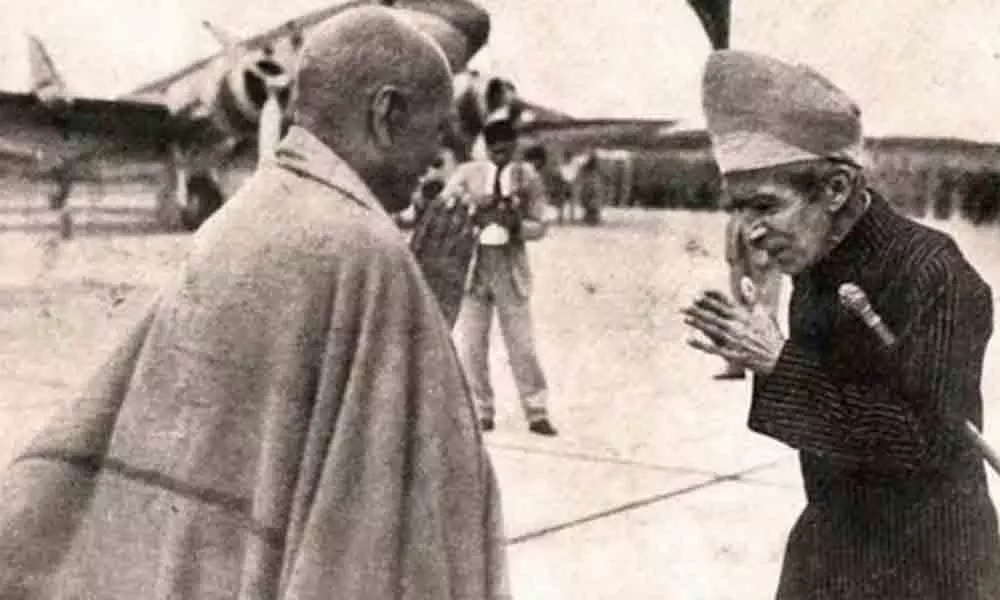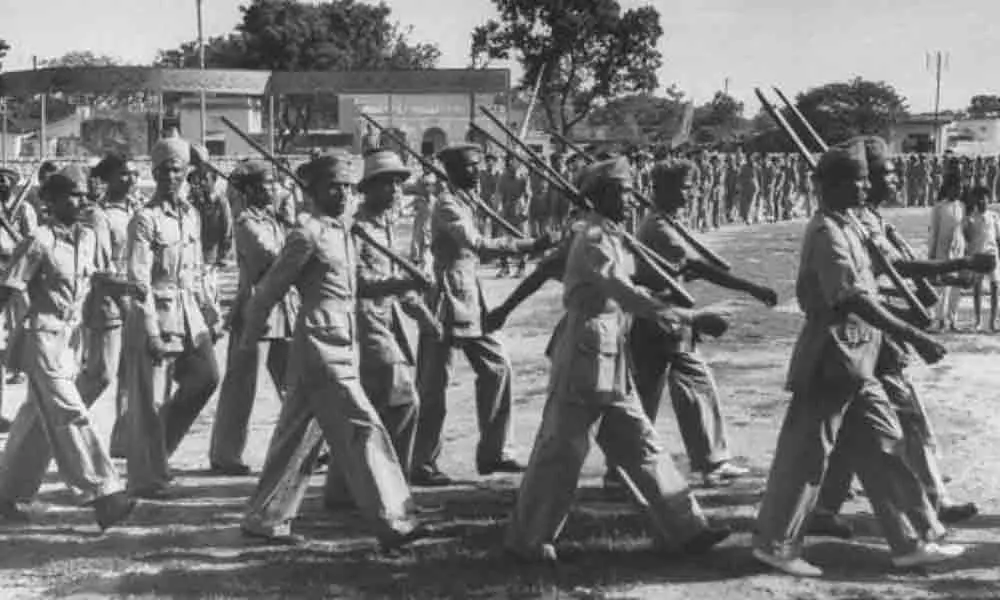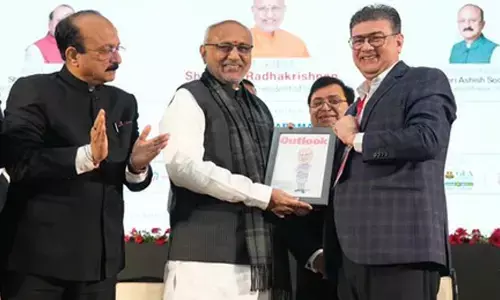The Yoke of Oppression
The greatness of history lies in the fact that you may cherish it, shun it or view it from a different prism but can never really ignore it. Unlike fiction that can be attributed to imagination or whimsical memory, history can never be dismissed, and it is this aspect that dominates dialogue in Telangana’s political landscape each year in the second week of September.
The greatness of history lies in the fact that you may cherish it, shun it or view it from a different prism but can never really ignore it. Unlike fiction that can be attributed to imagination or whimsical memory, history can never be dismissed, and it is this aspect that dominates dialogue in Telangana's political landscape each year in the second week of September. The rebellion that rocked the Telangana region is ignored by some parties due to political compulsions and fought over by others but largely kept alive more by controversy than celebration. None can, however, deny the fact that the 'Telangana Sayudha Poratam' (Telangana Armed Rebellion) was a people's rebellion against tyranny quite unparalleled in history.
September 17, 1948, the day the Telangana region became part of the Indian Union after an unprecedented peasant revolution against the feudal lords and the Princely State of Hyderabad ultimately culminated in police action and liberation is remembered by all as 'Vimochana Dinotsavam (Liberation Day). The movement threw up several prominent leaders, registered the emergence of Communism and showed how popular culture impacts social change. The demand for the restoration of the Telugu language shadowed by the imposition of Urdu, which developed into the 'Andhra Mahasabha' and the outpouring of folk song, drama and revolutionary poetry crucial in spreading the message of unity against the tyranny of feudal lords, who presided over a reign of unimaginable terror, made this huge people's movement unique and unlike any other.
There are numerous books and research papers on this rebellion, which began from the Nalgonda district of Telangana and spread to 3,000 villages inspiring over three million people. Ravi Narayana Reddy, Devulapalli Venkateshwar Rao, Chandra Rajeshwara Rao, Raj Bahadur Gour, Makhdoom Mohiuddin – the list of people who documented various aspects of this movement is long and consumes several reams. The unending fascination for this upsurge which signifies the triumph of the human spirit continues to this day and literature only ensures that memories are kept alive.
The atrocities of the land-owning zamindars in the villages of Telangana emboldened by the Nizam and cunning village heads (Karanams) that set the stage for the rebellion against the brute force of the 'Razakars' and the merger of the Hyderabad State with the Indian Union were part of the trilogy written by Dasarathi Rangacharya whose much-acclaimed novel 'Chillara Devullu' was set in the period between 1936-42. It was followed by 'Moduga Poolu' and 'Janapadham', which focused on the rebellion and after. Rangacharya's work remains the first in a series of such narratives exposing a slice of history that remains a blot on humanity.
Rangacharya, who himself participated in the rebellion along with fellow activist and litterateur Vattikota Alwar Swamy is said to have embarked on writing this novel to complete the unfinished work of his friend Swamy, who had died before he realised this dream. 'Chillara Devallu' was made into a feature film with the same name in 1975 to reach out to larger audiences. The hero here is a music teacher Sarangapani from Vijayawada, who comes to a village in Telangana, in search of a job and witnesses the inhuman suppression, brute force and reign of terror in a system where the nexus between the Zamindar, Karanam and the Nizam spells doom for the peasants and common folk in the villages. Although the novel was set in the pre-rebellion stage it mirrored the situation that boiled over when the evil band of Razakars (a private militia formed by Kasim Rizvi) fuelled the volatile situation making freedom from oppression and deliverance from a corrupt system an absolute necessity.
Sunkara Bhaskara Rao and Vasireddy Bhasker Rao's play 'Maa Bhoomi' written in 1947 about the suffering of peasants under the burden of taxation and the atrocities of the Deshmukhs (Landowners) drew large audiences, who related to the situation. The play written to muster support for the armed struggle taken up by the peasants across Telangana, served its purpose as it was watched by more than 20 lakh people with 125 groups staging them in the different villages before it was banned. The film 'Maa Bhoomi' was however based on the famous Hindi/Urdu novella 'Jab Khet Jage' written by Kishan Chander and shows the entire rebellion ending with the merger of Telangana State with the Indian Union. Directed by Gautam Ghosh with Tripuraneni Saichand as the hero, it was hugely popular when it hit the screens in 1980 winning two State Nandi awards for 'Best Film' and 'Screenplay' and the Filmfare award for 'Best Film'.
The book 'Telangana People's Struggle and its Lessons' by Putchalapalli Sundarayya, an indefatigable fighter for the rights of the toiling masses, one of the founders of the Communist Party of India and a leader of the Telangana Armed Struggle provides valuable insights about the strategy adopted to liberate people from the shackles of bondage and tyranny. It speaks of the terror unleashed by the police and the rulers, the formation of guerrilla squads, the communication network and the years in the forests by squads fighting both the Nizams' forces and later the Indian army. It is a damning description of the corrupt system and the people's will that resulted in freedom.
Ampasayya Naveen's Sahitya Akademi award-winning novel 'Kaalarekhalu', which I had the privilege to translate into English with the title 'Imprints of Time' is just out and is a chilling portrayal of the atrocities against peasants involving unfair levy, bonded labour and illegal amassment of land. The exploitation of young girls referred to as 'bapas' brought by the Zamindars wives as part of their dowry and expected to service all guests, the violence, harassment, terror and sexual exploitation, the closure of Telugu medium schools leading to the 'Andhra Bhasha Udyamam', the unfolding rebellion and ultimate merger of the Hyderabad State with the Indian Union stand out through narratives that depict the cruelty and inhuman behaviour of those drunk on power and authority.
The work based on a decade of research and extensive travel has the author's own recollections as well as interviews conducted in villages at the epicentre of the rebellion. More than anything all literary works about the rebellion bring to the fore the immense strength, endurance and courage of the womenfolk of Telangana, who paid a heavy price as in the case of all rebellions where women bear the brunt of the suffering. Moving tales of women working in the fields forced to squeeze milk from their breasts into cups made from leaves and sent to feed their infants, women defending their honour with chilli powder, pestles and spears, those stripped naked, paraded and molested and young brides, who were kidnapped on their wedding night to satisfy the Zamindar's lust are but a few from the numerous gruesome and sordid crimes against women recounted in film and literature. Also documented is their unbroken spirit and heroic fight back.
Chakali Ailamma, Moturi Udayam, Chennaboyina Kamalamma, Mallu Swarajyam, Yellapragada Seethakumari, Arutla Kamala and numerous other women find mention for their sacrifices, which are unsurpassed and unseen in any other revolution in the world. The rebellion had many heroes and martyrs too and innumerable folk songs written by known and unknown poets mobilised masses and instilled a sense of oneness while fighting a common enemy. 'Palletoori Pillagaada' by Suddala Hanumanthu, several songs by Rajaram and the very popular 'Bandenka bandi katti' by Bandi Yadagiri are part of a huge body of work that was a product of the time.
The Telangana rebellion occurring at a time when communication was rudimentary proved that literary and cultural activity could be a powerful medium to unite masses and initiate action. Captured in song, poetry, drama and novel, the spirit of the movement that overthrew the yoke of oppression remains entrenched in memory reminding us of the perils of unbridled power, greed and tyranny. Its relevance is timeless.


